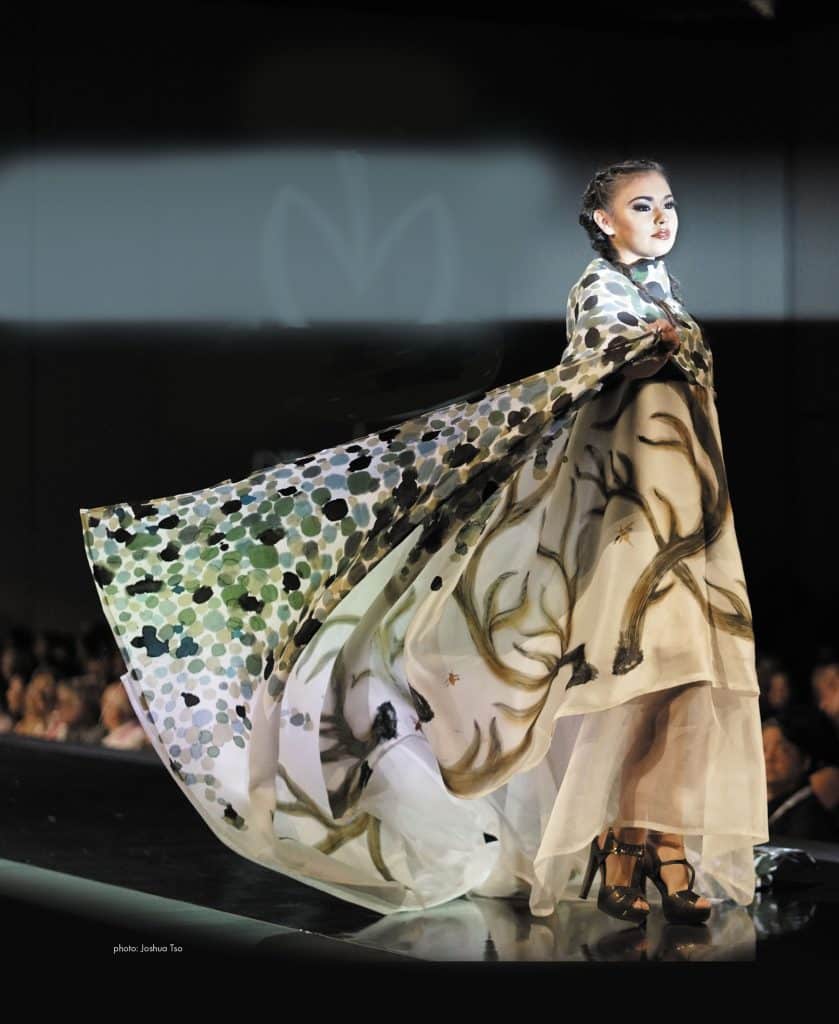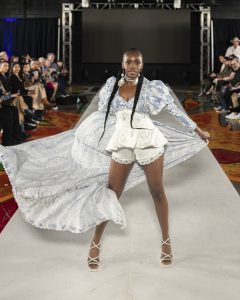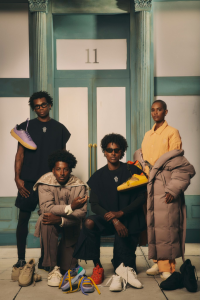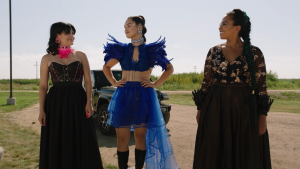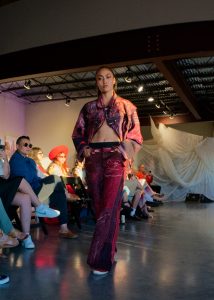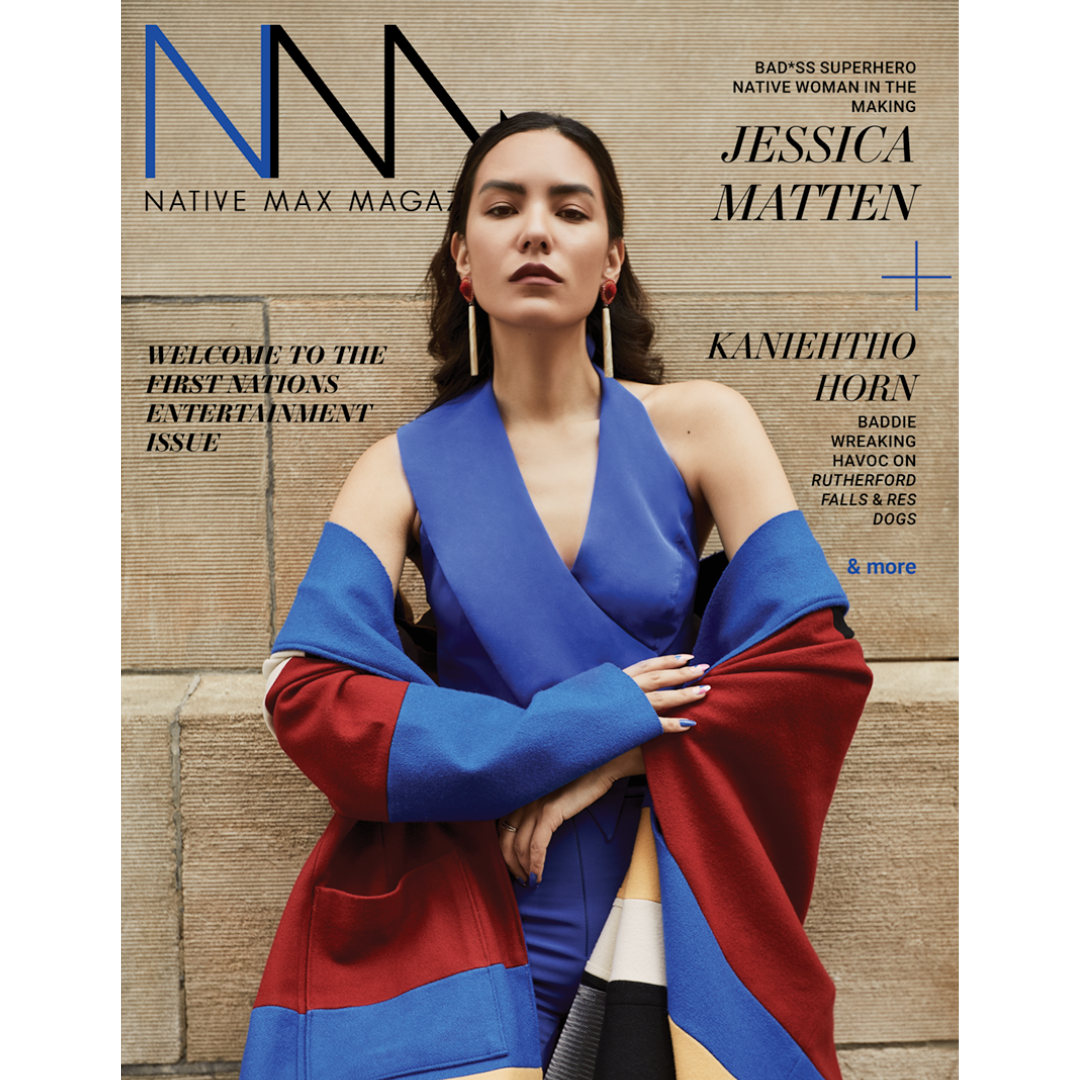Select a subscription plans
You need a subscription to access this content.
On September 1, the Spencer Museum of Art at the University of Kansas will open Native Fashion. This exhibition explores the diversity and ingenuity of wearable artworks produced by Native people from the 19th century into today. The exhibition, which represents over 40 tribal nations, will feature traditional garments, contemporary couture and streetwear, and an expansive array of accessories, including jewelry, bags, and other adornments.
Among the contemporary artists featured in the exhibition are Teri Greeves (Kiowa), Lily Hope (Tlingit), Jamie Okuma (Luiseno, Shoshone-Bannock, Wailaki, and Okinawan), Patricia Michaels (Taos Pueblo), Jontay Kahm (Plains Cree), Chris Pappan (Osage, Kaw, Cheyenne River Lakota Sioux), Kevin Pourier (Oglala Sioux), Rhonda Holy Bear (Cheyenne River Sioux), Ryan Redcorn (Osage), Wendy Red Star (Apsáalooke), Cara Romero (Chemehuevi), and Diego Romero (Cochiti Pueblo), among numerous others. Native Fashion also includes works produced in collaboration with major brands such as Nike, Ralph Lauren, and Mattel, as well as historical objects, photographs, and drawings capturing the trajectory of Native innovation and style through time. The exhibition will remain on view through January 5, 2025.
Native Fashion is curated by Sydney Pursel (Iowa Tribe of Kansas and Nebraska), the Spencer’s Curator of Public Practice, alongside a group of Indigenous advisors and collaborators, including State Representative Christina Haswood (Diné), Elena Theresa Johnson (Apache Tribe of Oklahoma), Alicia Swimmer (Oglala/Sicangu Lakota), Felicia Miner (Cheyenne River Sioux), Miranda Bradford (Citizen Potawatomi Nation), and Travis Campbell (Cherokee, Choctaw, Delaware), Director of the Cultural Center and Museum at Haskell Indian Nations University.
In addition to the exhibition, on December 14, 2024, the Spencer will host a runway show to highlight contemporary Native fashion and celebrate Native designers from the region. More details regarding the runway show will be shared in the fall of 2024. The exhibition is also accompanied by a series of workshops for aspiring Native designers and models, led by Native fashion writer Dr. Jessica Metcalfe (Turtle Mountain Chippewa); designer and filmmaker Steven Paul Judd (Kiowa, Choctaw); and designer, filmmaker, and model Peshawn Bread (Comanche, Kiowa, Cherokee).
“We are working with an all-Native advisory board on this project to ensure that more voices, tribes, and stories are represented in the exhibition. The group was instrumental in the development of the exhibition themes and the artist selection, which includes many local Indigenous designers,” said Pursel. “I am particularly excited to have the opportunity to present local artists alongside those who are nationally recognized to capture the incredible talent in our home region and reflect the depth of diversity among Native makers.”
Native Fashion examines the importance of fashion and adornment to the expression of tribal and personal identity as well as in the broader contexts of Indigenous lifeways. The role of fashion is explored in four overarching themes:
- “Resilience” explores Indigenous innovation and resourcefulness in the use and development of materials and techniques. This includes an examination of how trade among Native communities and later Europeans influenced craft, design, and embellishment. Among the historical works in this section are a pair of moccasins by Nora Thompson Dean (Delaware) from the late 1800s – 1981 and beaded moccasins with heels by an unknown maker from between the 1800s and early 1900s. Contemporary works include a pair of beaded high-heeled sneakers, titled Spider Woman / Emerging Woman (2015), by Teri Greeves, and a pair of painted Vans, titled Bless All Those Who Walk Here (2010), by Chris Pappan. Indigenous humor as a tool for resilience is shown in Warrior Shades (2008), sunglasses made with sandstone, catlinite, and white mother of pearl, with “Rez Bans” engraved on them, by Kevin Pourier and Fry bread jewelry (2024) by Elias Jade Not Afraid (Apsaalooké/Crow Tribe).
- “Representation” celebrates the diversity of tribal nations and features various styles of traditional and contemporary dress. The section also considers the differences between cultural appropriation and appreciation and Indigenous representation in pop culture. Intricate dolls by Rhonda Holy Bear will be shown alongside Native American Barbies. Other works include prints and accessories such as a Barack Obama bolo tie with beaded tips (2009) by Marcus Amerman (Choctaw); Market Imperialism (2004), a linocut print by Molly Murphy (Oglala Lakota); and a gorget titled Skoden (2023) by Jodi Webster (Ho-Chunk, Prairie Band Potawatomi) that features characters from the show Reservation Dogs.
- “Resistance” examines the impact of colonization, government policies, and activism on Indigenous identity and dress, including the ways in which activist groups utilize wearable symbols for awareness and solidarity. In addition to a selection of patches and pins dating from the 1970s into the 2020s, the section includes photographs, paintings, and works on paper depicting dress through time. Works include soft-ground etchings of Haskell Indian Nations University students (circa 1939) by Marguerite M. Nellis and metalwork made by Haskell students in the 1970s on loan from the Haskell Cultural Center and Museum. Other featured items include Frontline Aunty (2022), a collage work by Henry Payer (Ho-Chunk); a ribbon skirt by Leona Antoine (Siċaƞġu Lak̇ot̄a); and a “Merciless Indian Savages” t-shirt by Steven Paul Judd.
- “Relations” highlights connections between people and place and features artists, designers, and storytellers from Lawrence–where the Spencer is located–and the surrounding region. An interactive display will feature portraits of prominent Indigenous community members taken by students studying photography at Haskell Indian Nations University. Video documentation from the “Indigenous Couture Goes Vogue” runway show organized by Esmarie Cariaga (Isanti Dakota) at Haskell in April 2024 will accompany outfits worn in the show. Artworks in this section include clothing and jewelry by Patricia Michaels, Diamond Williams (Tlingit), Claudia Tyner Little Axe (Seneca-Cayuga Nation), and Sage Mountainflower (Ohkay Owingeh, Taos Pueblo, Navajo Nation).
“Native Fashion offers our audiences a compelling opportunity to explore fashion as both core to Native identity and as a living art that continues to have meaning and impact to tribal communities,” said Saralyn Reece Hardy, the Marilyn Stokstad Director of the Spencer Museum of Art. “The exhibition reflects the Spencer’s interest and commitment to collaboration and outreach to the communities we serve and aim to represent. It also expands on the traditional museum exhibition by offering a platform to a subject that is both deeply relatable and relevant to the daily lives of our visitors.”
About the Spencer Museum of Art
The Spencer Museum of Art, located on the University of Kansas Lawrence campus, explores the intersection of art, ideas, and experiences. With a diverse collection of more than 48,000 works, the Spencer is the only museum in Kansas with contemporary and historic artwork in all mediums from cultures across six continents. The Spencer Museum facilitates arts engagement and research through exhibitions, artist commissions and residencies, conferences, performances, lectures, children’s art activities, and arts and culture festivals. Admission to the Spencer Museum of Art is free.



